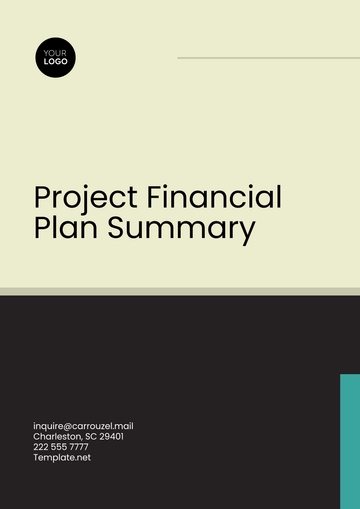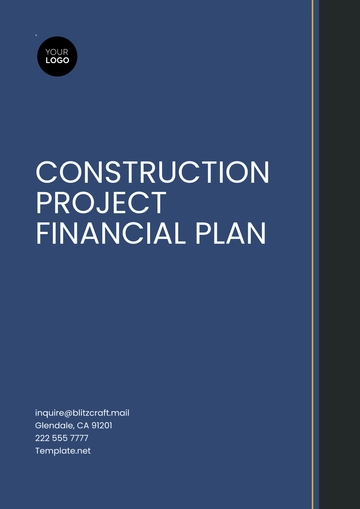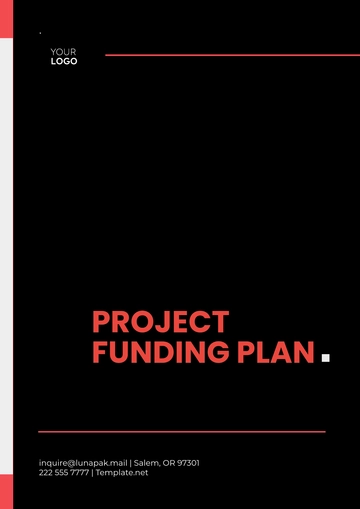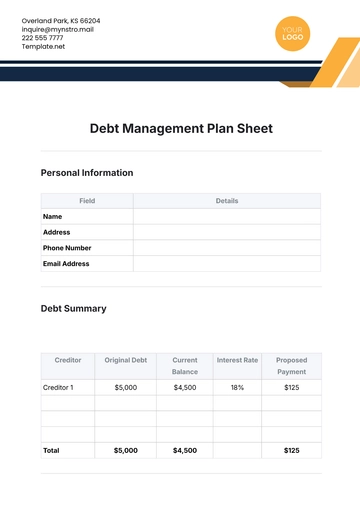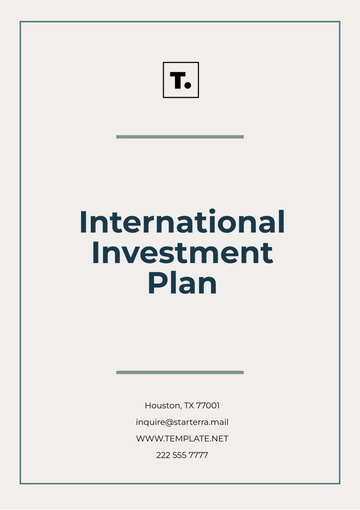Finance Control Monitoring Plan Template
Executive Summary
A. Introduction
The Finance Control Monitoring Plan is designed to ensure the robust oversight of financial processes within [Your Company Name]. This plan plays a pivotal role in upholding financial transparency, compliance, and accountability.
B. Key Objectives
Our primary objectives include maintaining the integrity of financial data, ensuring compliance with regulatory standards, and identifying and mitigating financial risks proactively.
Scope and Coverage
A. Scope
The Finance Control Monitoring Plan will encompass all financial aspects of [Your Company Name], including budget management, expenditure tracking, and financial reporting. It extends to all departments and subsidiaries under the [Your Company Name] umbrella.
B. Coverage
Specifically, the plan will monitor budget adherence, expense categorization, and financial reporting accuracy. It aims to create a comprehensive overview of financial activities, leaving no room for potential discrepancies.
Governance Structure
A. Responsible Parties
Key stakeholders involved in the finance control monitoring process include the CFO, internal auditors, department heads, and finance personnel. Each has distinct roles in maintaining financial integrity.
Stakeholder | Role |
|---|
CFO | Overall oversight and strategic direction |
| |
B. Communication Channels
Regular meetings and reporting systems will facilitate transparent communication. Escalation channels are established to ensure swift and effective communication in case of financial irregularities.
Monitoring Procedures
A. Financial Data Collection
Financial data will be collected through secure and standardized systems, guaranteeing accuracy. Automated tools will streamline the data collection process, minimizing the risk of manual errors.
Data Collection Method | Description |
|---|
Secure Systems | Standardized platforms for data collection |
| |
B. Regular Audits
Scheduled quarterly audits will be conducted, focusing on random samples of financial transactions. This ensures a thorough and unbiased examination of financial records.
C. Documentation Standards
Stringent documentation standards will be maintained, ensuring that all financial transactions are recorded accurately and comply with industry regulations.
Risk Assessment
A. Identification of Financial Risks
Potential financial risks, such as market fluctuations and operational inefficiencies, will be identified and categorized based on their potential impact and likelihood of occurrence.
Risk Category | Potential Impact | Likelihood of Occurrence |
|---|
Market Fluctuations | Financial loss due to market instability | Moderate |
| | |
B. Mitigation Strategies
Comprehensive strategies, including risk transfer mechanisms and contingency plans, will be implemented to mitigate identified financial risks. Clear action plans and responsibilities will be assigned.
Reporting Mechanism
A. Periodic Reports
Monthly reports, detailing key financial metrics and highlighting any deviations from the norm, will be generated. These reports will be easily digestible, allowing for quick decision-making.
Metric | Description |
|---|
Budget Adherence | Percentage variance from the approved budget |
| |
B. Escalation Protocol
An escalation protocol is in place to ensure that significant financial discrepancies are promptly communicated to the appropriate management levels. This enables timely intervention and resolution.
Continuous Improvement
A. Feedback Mechanism
Regular feedback from stakeholders will be sought to identify areas for improvement. This continuous feedback loop ensures the finance control monitoring plan remains adaptive and effective.
B. Adaptation to Changes
The plan is designed to adapt to changes in financial regulations, organizational structure, or market conditions. Regular reviews will be conducted to ensure the plan remains aligned with the evolving financial landscape.
Conclusion
The Finance Control Monitoring Plan is a proactive approach to ensuring financial accountability and transparency within [Your Company Name]. Through its implementation, we reaffirm our commitment to maintaining the highest standards of financial integrity.


